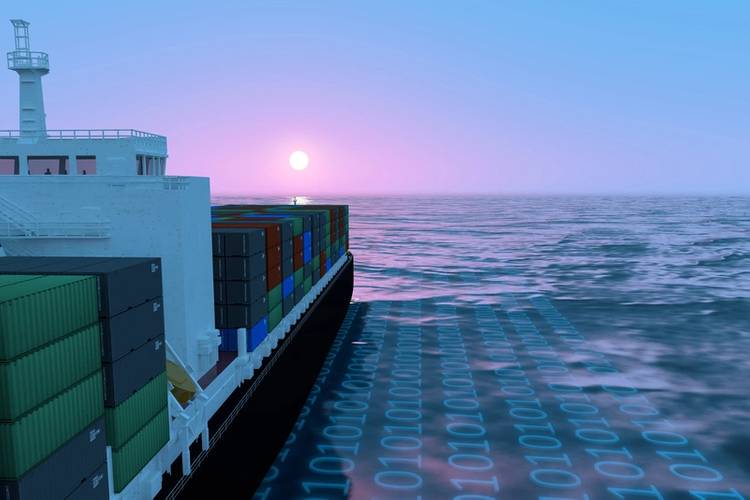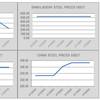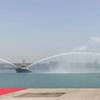Understanding Marine Autonomy: Today’s Market and Future Concerns
Press coverage of early commercial marine autonomy projects is remarkably broad given the small number of marine industry professionals engaged in bringing these projects to market. The much larger assembly of industry stakeholders are left wondering what marine autonomy means for them. Regulatory, cost, and technical challenges stand in the way of fielding today’s autonomy technologies for most existing fleets and vessel missions. Autonomy is coming whether you’re prepared or not. While it may not penetrate every market segment, companies ignoring it risk finding themselves stuck behind their competition. Smart observers are asking what the autonomy trend means for their jobs and businesses, watching this developing market, and looking for ways to engage and prepare for the future.
Market Review
Marine autonomy covers a spectrum ranging from relatively low-cost commodity vehicles to large-scale defense projects. Commodity autonomous vehicle products aren’t particularly new. Mature UUVs and remote-control survey boat products are available today from a number of providers. Commodity autonomy is characterized by vertically integrated manufacturers and well-defined product lines. On the other end, military projects are leading the research and development of full-scale ships that are truly autonomous. The key driver for these projects is the government’s willingness to spend significantly to mature new technology and deploy it. Recent programs like the Navy’s MUSV and LUSV offer large build quantities, encouraging significant industry investment to develop advanced solutions for the government.
Between the ends of this spectrum is a vast and varied market. Ships and boats in the middle of the spectrum are most often unique to the demands of a specific task, location, route, and operator. As vessels in this market begin employing autonomy technology, this diversity will grow. Companies delivering commodity autonomy products have the benefit of vertical integration, designing every detail of their products, and often accomplishing production in-house. Defense projects are developed by large prime contractors with deep experience designing and integrating complex sensors and computer systems. In the middle, ships are often designed in stages, where concept, contract, and detail design might be undertaken by separate companies. Although the market in the middle will leverage technology developed at the ends, it will require different solutions that can be readily and easily adapted by a wide variety of designers, builders, operators, and environments.
The middle market is also the most limited by the absence of a clear regulatory framework. Various demonstration projects have taken place in the past several years in several different commercial applications. Despite the technological successes of these projects, in most cases they represent a proof-of-concept without a clear path towards regulatory acceptance to enable broader use.
A parallel spectrum of remote supervision and autonomous support systems is also developing. This design space is bracketed by truly autonomous vessels at one end. On the other, autonomy technologies are deployed with a goal to improve the performance of crewed vessels. In between are many variations including remote control and human supervision of automated ships. A promising development is the adaptation of sensing technologies and collision avoidance algorithms into products designed to serve strictly as operator aids that supplement normal crewing practices.
New Challenges, New Skills
Fully autonomous ships are not yet a viable solution for most applications. While specific contributing technologies have been demonstrated, we have yet to see these pieces integrated into a compelling commercial demonstration for sophisticated autonomy without close human supervision. The regulatory environment is developing slowly but still leaves great uncertainty. Despite these challenges, there is no doubt that autonomous ships are coming. Various projects have demonstrated capable remote-control systems and the US Navy has conducted fully autonomous operations with the Sea Hunter. Will autonomy be a major disruptor with a broadly applicable business case? Yes. It seems likely that there are great opportunities for early adopters. Organizations willing to invest in maturing the technology may secure a competitive advantage by realizing the benefits of autonomy before more conservative players.
The primary challenge implicit in autonomous ships is losing the great adaptability of a human crew. Even remote-control systems that retain humans in the loop constrain human flexibility because no remote-control interface can replicate the versatility of a human walking around the ship. Today’s typical control systems require operators with deep experience and broad understanding of the ship’s systems and environments to filter through data and nuisance alarms to determine what information is truly actionable. Our standards for integration will have to evolve so that remote control and autonomous fault response become normal design considerations for subsystems.
Control systems on autonomous ships must integrate subsystems more tightly, virtualizing lower level components into simple models that higher-level autonomy algorithms can effectively use to make decisions that properly balance equipment status against operational needs. Reliability will remain an important requirement for marine equipment, with new importance on the ability to accurately communicate problems and required corrective actions to the control system. Commissioning and testing autonomous navigation systems requires comprehensive checkout of individual sensor performance, correlation between sensors, communication between subsystems, and tests of backup and emergency modes. While the technical horsepower to work through major design and commissioning issues may remain with autonomous system vendors, builders and owners will need to carefully consider their project schedules and required testing conditions to build an efficient and executable plan.
New and improved skills will be needed. Prime contractors will take design responsibility for specifying an overall network concept, approving subsystem designs, and defining the physical and logical interfaces between systems. Shipyards and boatbuilders will require increased sophistication in capabilities for procurement, integration engineering, installation, commissioning, and testing.
Ship design has always required cross-disciplinary teams. Both autonomous ships and ships with more limited automation demand growth in the sophistication and expertise in naval architecture firms. The deployment of this new technology will favor designers with a demonstrated history of creativity and ability to develop new and novel solutions. A deliberate and well-designed ship-wide network will be required at the concept design stage, and controls engineers must define robust interfaces between subsystems. In some cases, simpler system designs will be a better solution than adding multiple layers of redundancy and instrumentation. In other cases, designers will need to offer systems that can gracefully degrade, losing capability incrementally and allowing remote or autonomous realignment. There will be much greater use of actuators and sensors throughout the vessel to provide situational awareness and fault tolerance.
Ship owners and operators will ultimately be the drivers of this transformation. Where the use of autonomy technology offers compelling advantages, operator demand will push suppliers and regulators to offer solutions. At the same time, using these technologies will require new skills from operators. Masters will need to define virtual “standing orders” through the autonomy system’s interface. Post processing of the vast amount of data generated from computer-generated mission logs will offer optimization opportunities to operators that learn to interpret it. Shore-based maintenance will grow with an increased focus on electronics specialists with expertise to maintain network, control, and sensor systems. A comprehensive continuous testing program will be essential to ensure the systems operate as intended.
Considerations for Adding Autonomy Technology
The acquisition or design of a new automation technology or autonomous vessels requires special consideration of cybersecurity, equipment obsolescence and standardization.
- Cybersecurity – getting this right requires expertise, but don’t expect an expensive consultant to easily patch up a bad design. If cybersecurity isn’t an important consideration starting from the autonomous vessel’s concept design, it can’t be effectively cobbled on the end. Owners and designers need to engage with cybersecurity requirements from the beginning.
- Equipment Obsolescence – upgrading control equipment is disruptive and costly. Planning for mid-life overhauls should be included in the initial design with consideration of the ever changing landscape of technology and vendors. The ideal autonomy system makes use of discreet modules with open interfaces. The lifecycle impact of proprietary control systems and interfaces must be weighed against the comprehensive capabilities offered by the largest controls providers.
- Standards – customers must demand standardization as autonomy technology matures. You wouldn’t accept unique flanges requiring custom engineering for all the components in a piping system. Designers, builders and owners should expect the same for autonomous technology.
A number of open formats are suitable, but it will take time and strong market demand push penetration of new standards into the market.
Don’t wait for disruption
If recent technological disruptions in other industries offer any guide, early anticipation is the key to success. While the technology and regulations might not be fully in place today, the shipbuilding design and procurement timelines require immediate consideration of a future with widespread use of MASS. How will your operations be affected?



















